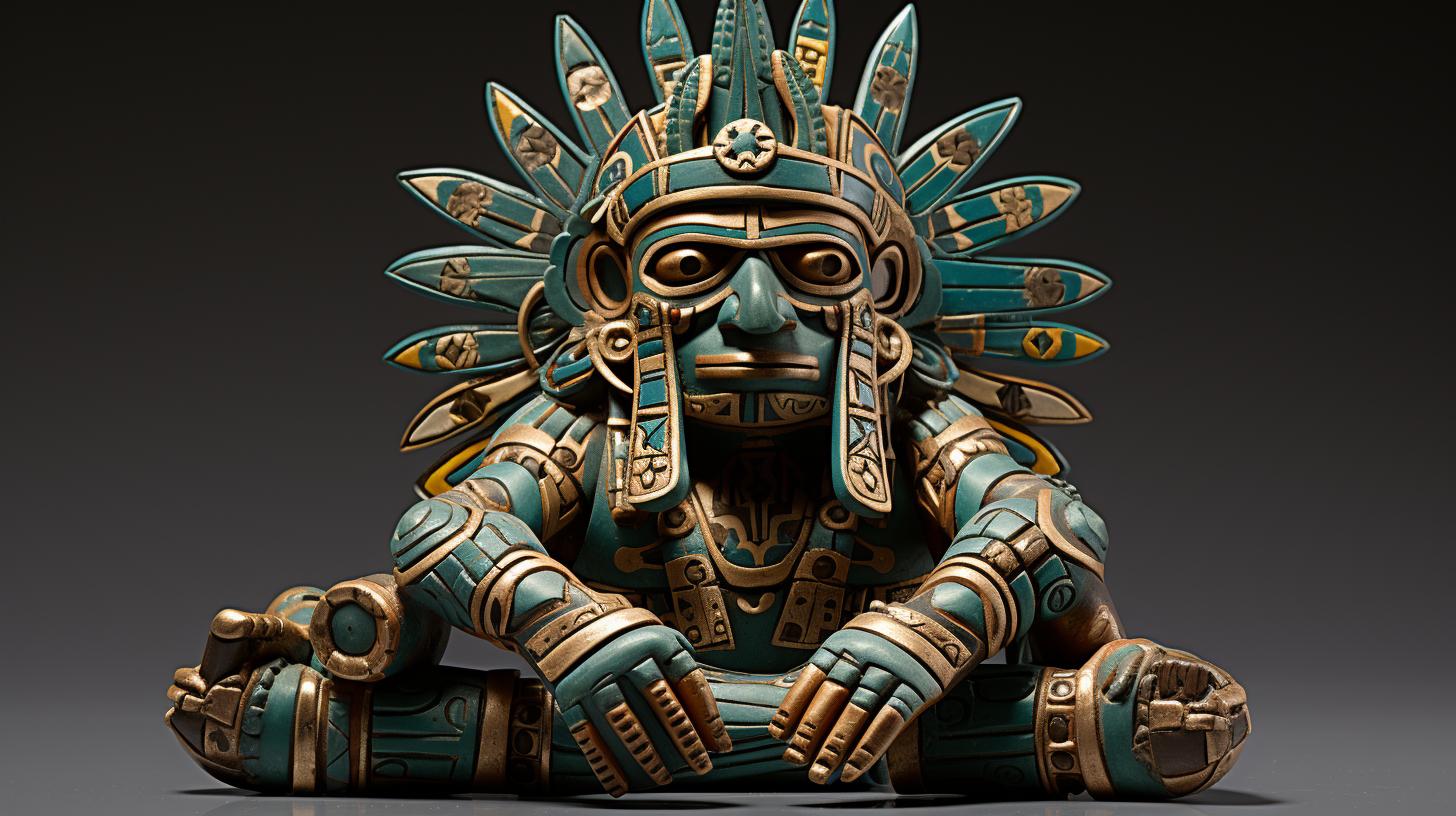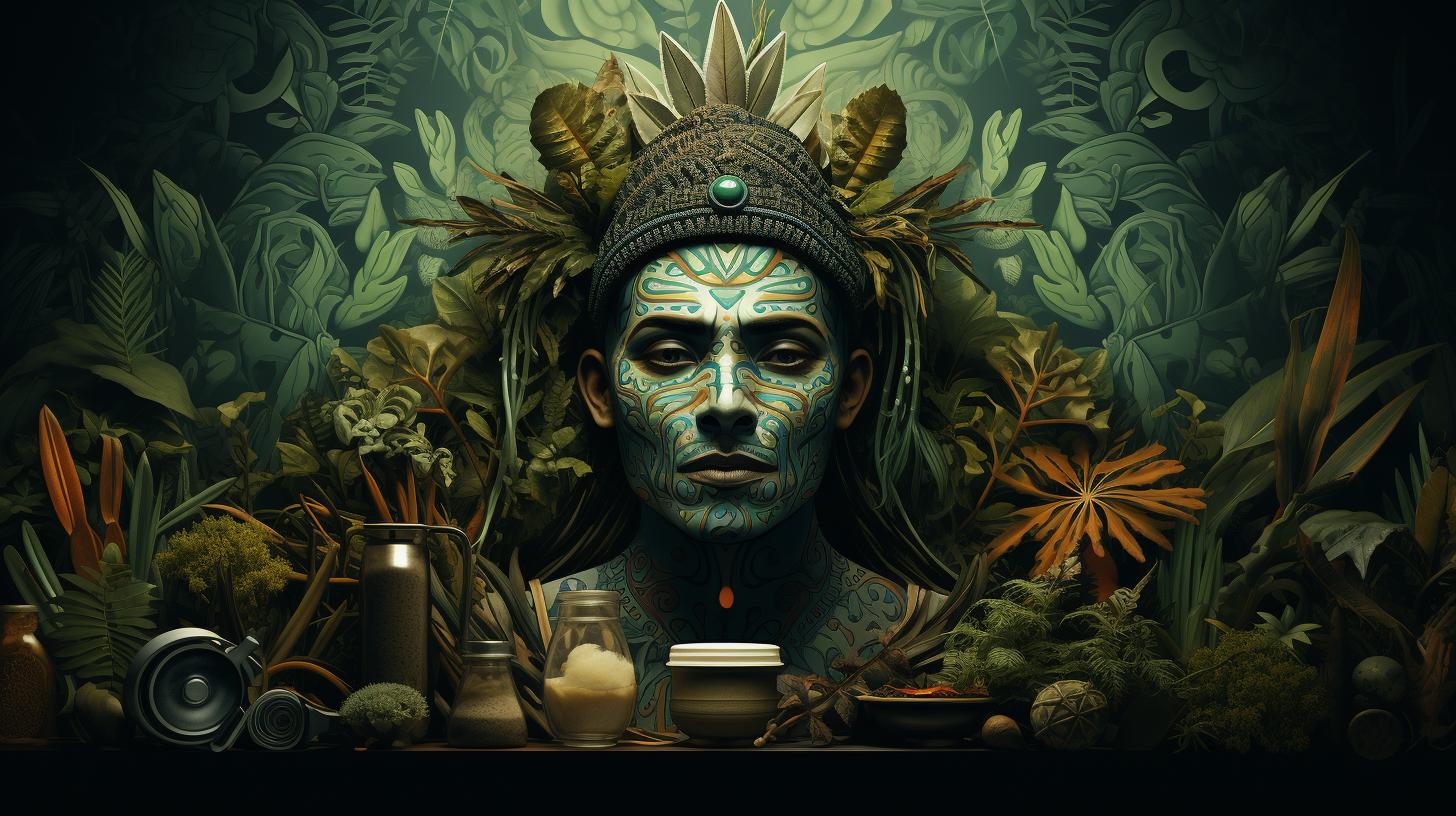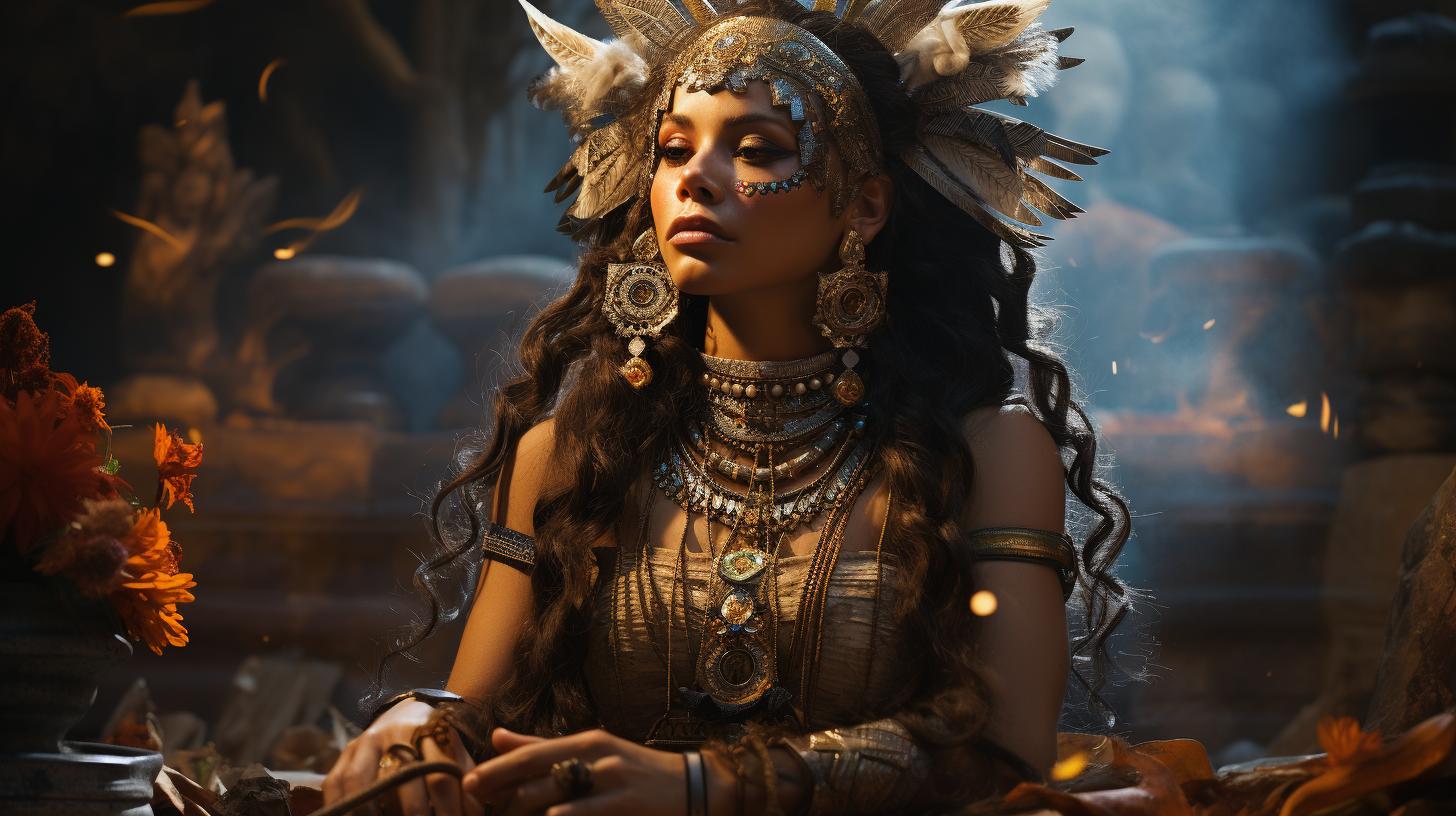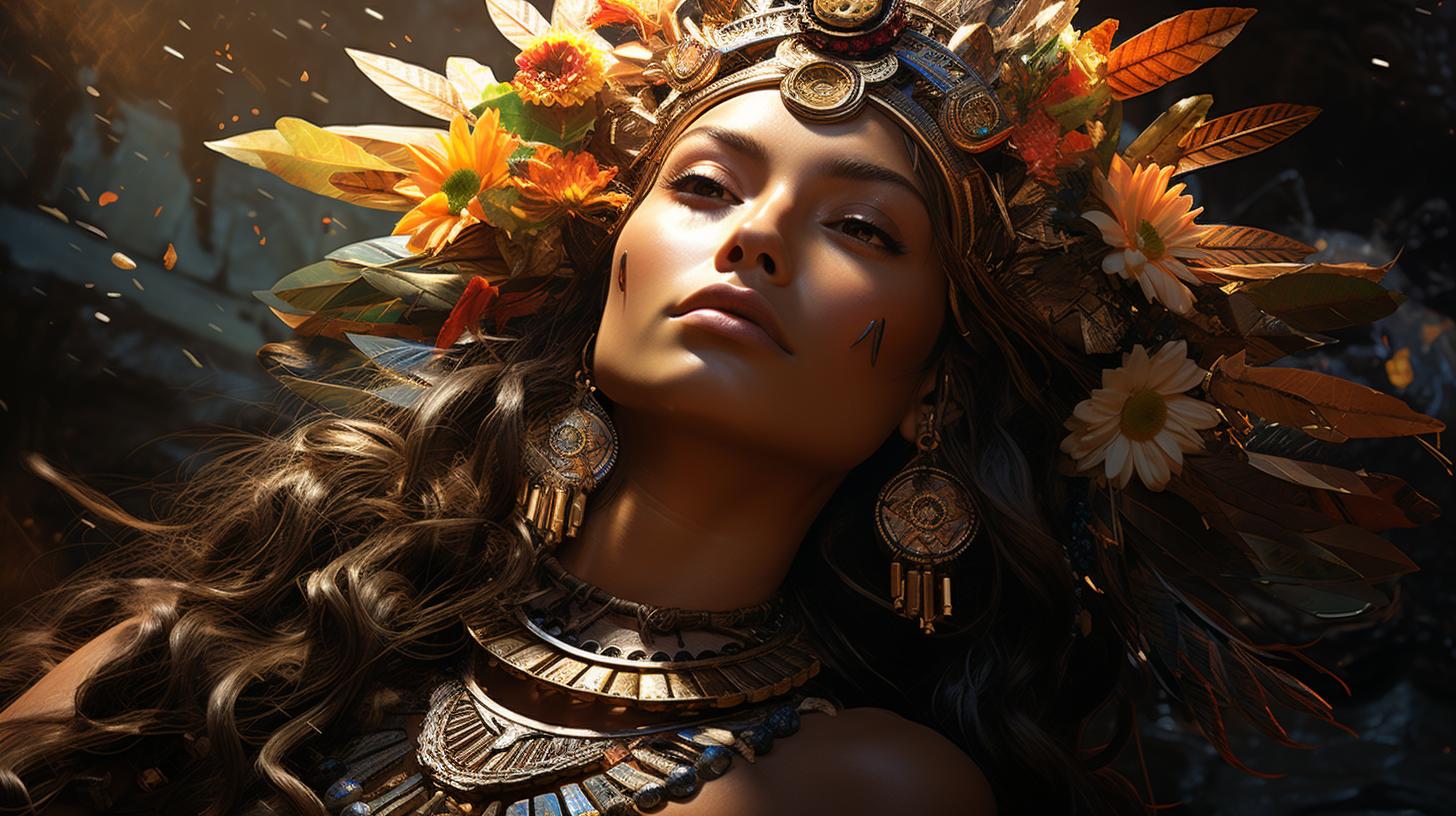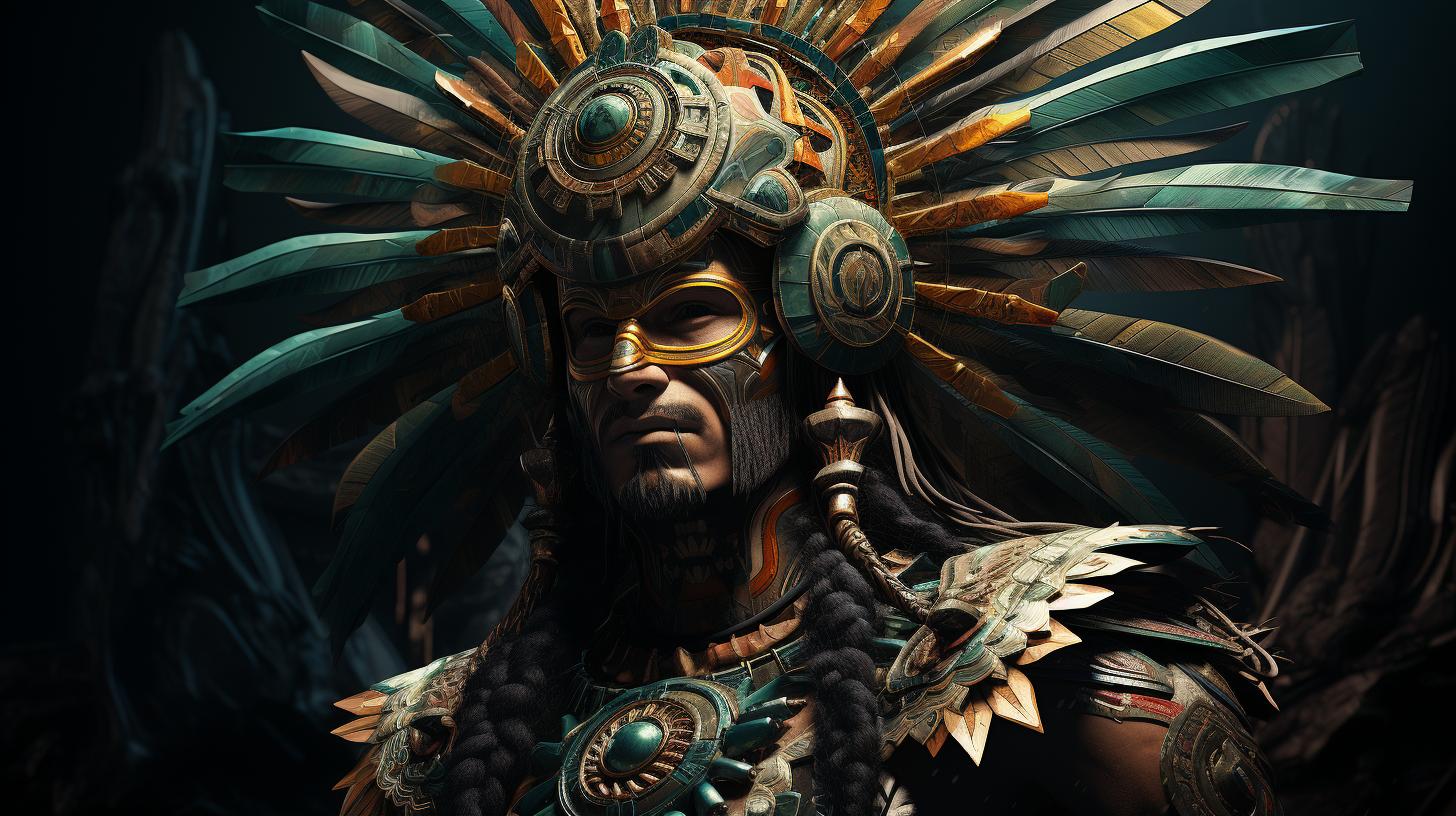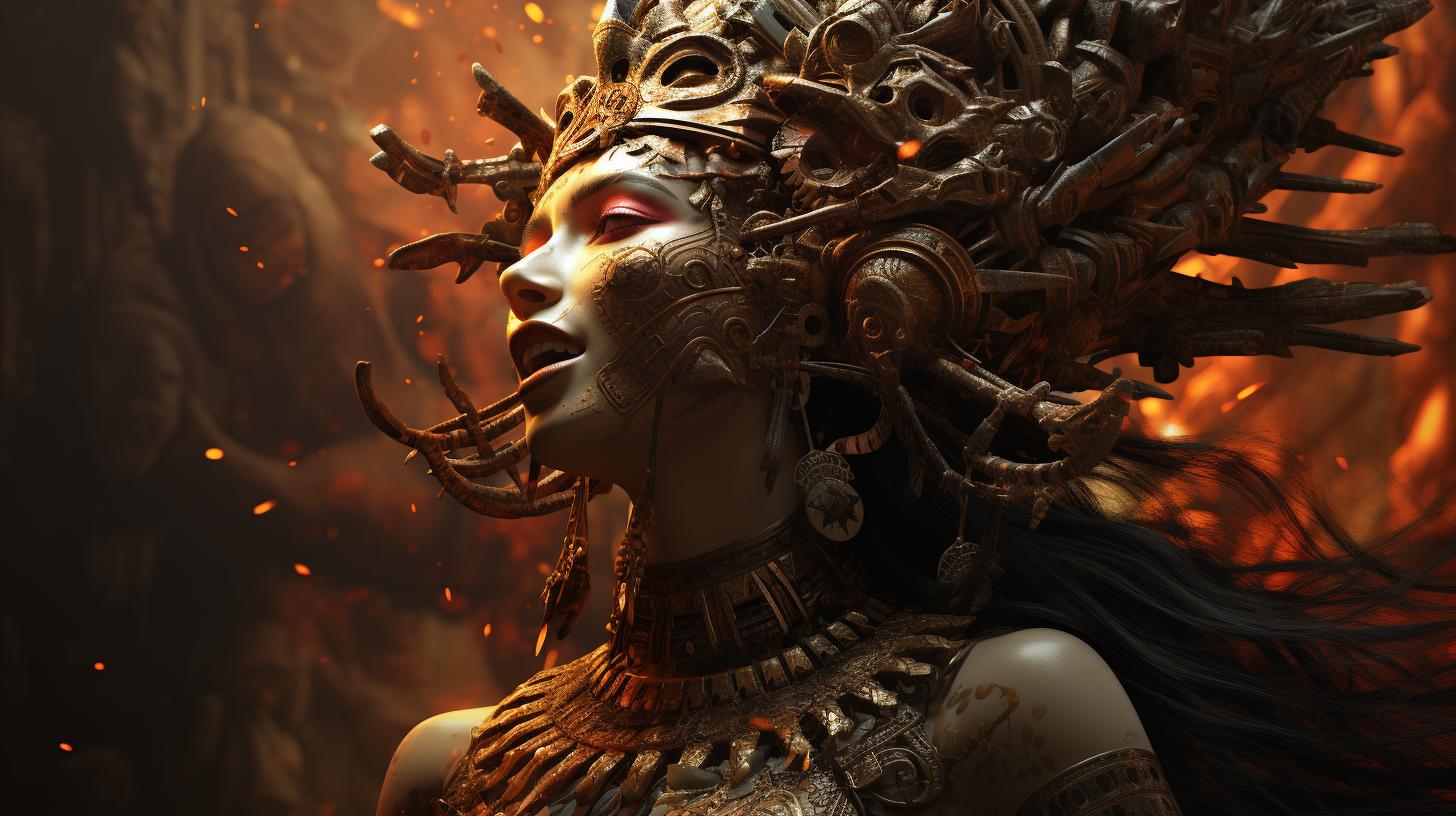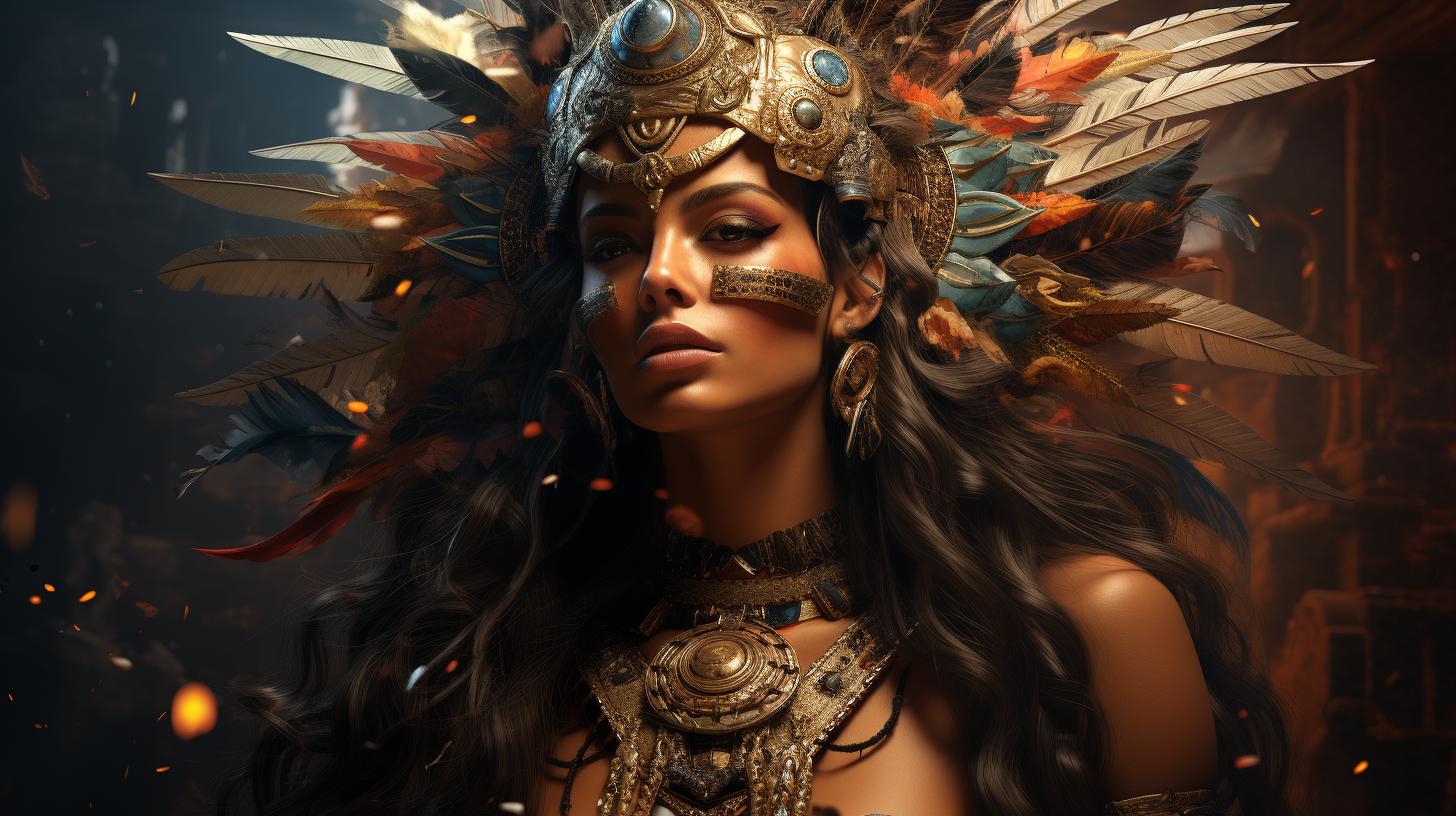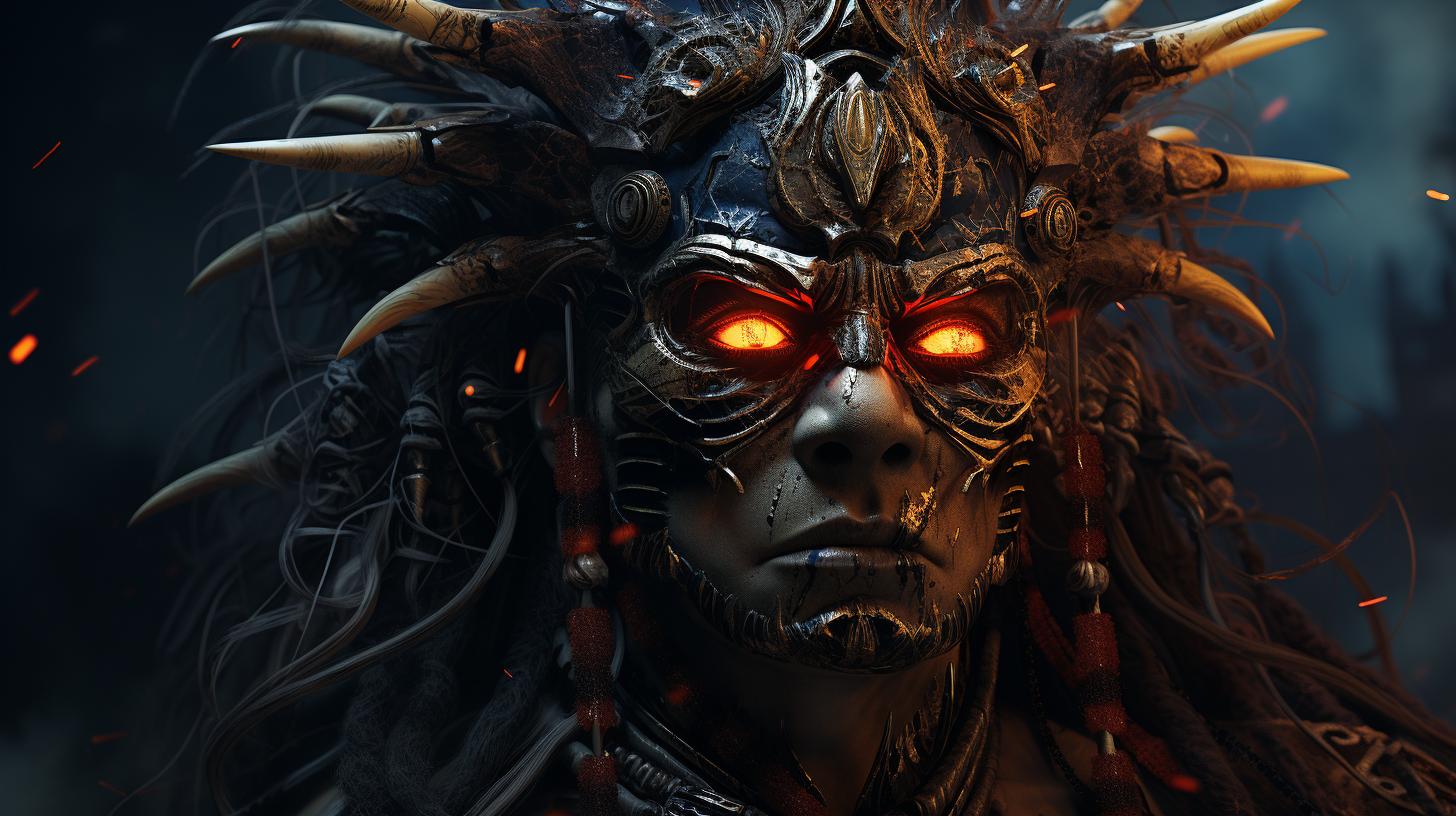Itzpapalotl Goddess: Unveiling the Mysteries of the Aztec Deity
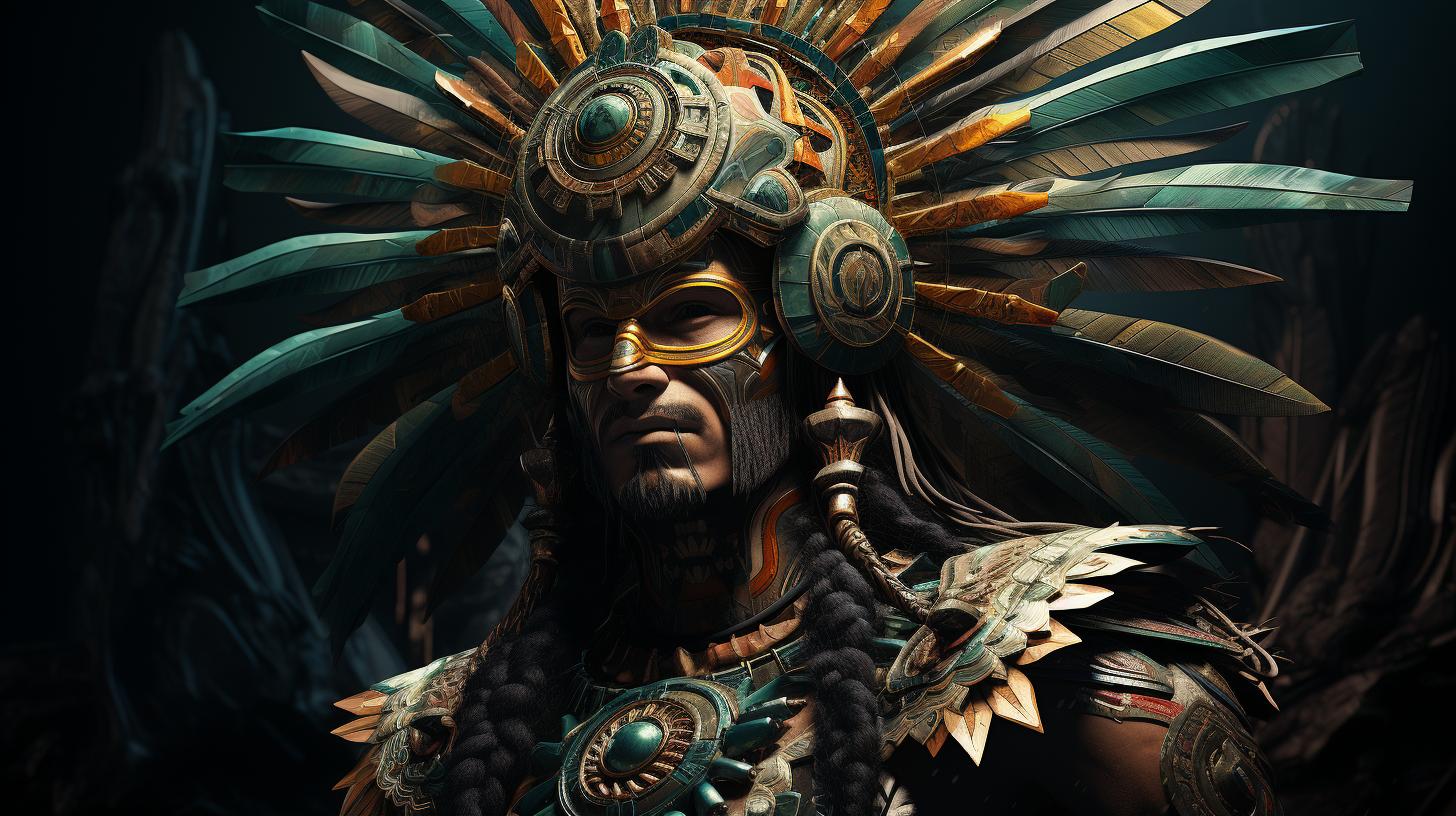
Itzpapalotl goddess, also known as the Obsidian Butterfly, is a powerful deity in Aztec mythology. Associated with death and rebirth, Itzpapalotl takes on the appearance of a skeletal figure with jaguar claws and sharp obsidian wings.
She is part of the Tzitzimime, a group of powerful star-demons, and protects midwives and women in childbirth. Itzpapalotl reigns over Tamoanchan, the celestial realm where the human race was created, and is revered as the patroness of witches.
This article explores the various aspects of Itzpapalotl and her significance in Aztec culture.
The Origin and Mythology of Itzpapalotl
Itzpapalotl, the enigmatic deity of the Aztec pantheon, holds a significant role in their mythology. As we delve into the origin and legends surrounding Itzpapalotl, we can gain a deeper understanding of this compelling figure and her place in Aztec culture.
The Aztec Pantheon and Itzpapalotl’s Role
Within the vast Aztec pantheon, Itzpapalotl emerged as a powerful presence associated with death and rebirth. As one of the Tzitzimime, the fearsome star-daemons, she held great influence and guarded the realms of the celestial.
Itzpapalotl’s association with the Tzitzimime and other female deities, such as the Cihuateteo and Tlaltecuhtli, extended beyond the role of protecting women during childbirth. Together, these divine beings formed a formidable force safeguarding the interests of women and the sacred realm of life creation.
The Symbolism and Meaning of Itzpapalotl
Itzpapalotl’s symbolism encompasses various aspects of life, death, and transformation. Her skeletal figure adorned with jaguar claws signifies her fearsome nature, while her wings adorned with obsidian edges evoke a mesmerizing and dangerous elegance.
As a divine embodiment of death and rebirth, Itzpapalotl symbolizes the cyclical nature of existence, where endings are merely gateways to new beginnings. Her presence in Aztec mythology serves as a reminder of the transformative power inherent in the processes of life and death.
- The Aztec pantheon depicted Itzpapalotl as a complex deity associated with death and rebirth.
- Itzpapalotl held a prominent role among the Tzitzimime, the powerful star-daemons.
- Her symbolic skeletal figure with jaguar claws represents her fierceness and strength.
- The obsidian edges on her wings convey a captivating and dangerous allure.
- Itzpapalotl embodies the cyclical nature of life, signifying the transformative power of death and rebirth.
Exploring the origin and mythology of Itzpapalotl sheds light on the profound symbolism and significance this Aztec goddess carries.
As we delve further into her appearance, powers, and the role she plays in Aztec society, we will unravel more layers of her intriguing persona.
Itzpapalotl’s Appearance and Powers
Itzpapalotl, the enigmatic Aztec goddess, possesses a hauntingly beautiful yet fearsome form that captivates the imagination. Here, we delve into her distinct characteristics, exploring the significance of her clawed butterfly form, her jaguar claws and obsidian wings, and the symbolic understanding of her association with death and rebirth.
The Clawed Butterfly Form of Itzpapalotl
One of Itzpapalotl’s most iconic aspects is her clawed butterfly form, which strikes a balance between elegance and danger. In this manifestation, she embodies the delicate gracefulness of a butterfly yet exudes a mysterious and powerful aura.
This unique combination symbolizes the transformative nature of life and death, showcasing her ability to navigate between realms.
Itzpapalotl’s Jaguar Claws and Obsidian Wings
Adding to her awe-inspiring presence, Itzpapalotl possesses jaguar claws and wings adorned with obsidian blades. These fierce claws are a manifestation of her formidable strength and prowess, reflecting her role as a protector and warrior goddess.
The obsidian wings, sharp and foreboding, represent the cutting edge of transformation and the potential for rebirth through the embrace of darkness.
Understanding Itzpapalotl’s Death and Rebirth Associations
Itzpapalotl’s association with death and rebirth goes beyond her appearance. As a goddess of the Aztec pantheon, she symbolizes the cyclical nature of life, highlighting the interconnectedness of beginnings and endings.
Through her embodiment of transformation, Itzpapalotl guides souls through the journey of death, facilitating their rebirth and renewal in the cosmic tapestry of existence.
In summary, Itzpapalotl’s appearance and powers:
- Include her clawed butterfly form, representing the transformative nature of life and death.
- Feature jaguar claws that embody her strength and protection as a warrior goddess.
- Comprise obsidian wings, symbolizing the sharp edge of transformation and the potential for rebirth.
- Demonstrate her association with death and rebirth, highlighting the interconnectedness of beginnings and endings.
The Role of Itzpapalotl in Aztec Society
Itzpapalotl and the Tzitzimime
Itzpapalotl holds a significant position among the Tzitzimime, a group of powerful and dangerous star-daemons in Aztec mythology.
Alongside other female deities like Cihuateteo, Tlaltecuhtli, Coatlicue, Citlalicue, and Cihuacoatl, the Tzitzimime serve as protectors of midwives and women in labor. These celestial beings ensure the safety and well-being of those in the process of childbirth.
Itzpapalotl’s association with the Tzitzimime highlights her role as a fierce and formidable goddess who safeguards women during this critical phase of life.
Itzpapalotl’s Connection to Women, Childbirth, and Midwifery
Besides her involvement with the Tzitzimime, Itzpapalotl plays a significant role in the realm of women, childbirth, and midwifery.
As a revered deity, she provides protection, guidance, and support to women during labor and childbirth. Aztec women placed their trust in Itzpapalotl, believing that her divine presence ensured a safe delivery and the well-being of both mother and child.
Midwives sought her blessing and assistance in their crucial work, recognizing her power as a benevolent guardian in this realm.
Itzpapalotl’s Dominion Over Tamoanchan
Tamoanchan holds a significant place in Aztec mythology as the celestial realm where the gods created humanity. Itzpapalotl reigns over this realm, overseeing its operation and playing a vital role in the cycle of life and death.
Exploring Tamoanchan and Its Significance
Tamoanchan is believed to be the dwelling place of those who died prematurely, especially infants. In this ethereal paradise, they find solace and regain their vitality before embarking on a new reincarnated journey.
It is here that the Tree of Nourishment grows, a tree with an astounding 400,000 nipples that provide sustenance to the departed children.
The Tree of Nourishment and Reincarnation in Tamoanchan
The Tree of Nourishment symbolizes the rejuvenation of life and the cyclical nature of existence.
Itzpapalotl guards this sacred tree and ensures that the departed children are nurtured and prepared for their eventual return to the mortal world. The nourishment from the tree allows them to regain their strength and vitality, ready to embark on a new cycle of life and reincarnation.
Itzpapalotl in Aztec Calendar and Cosmic Influence
Itzpapalotl’s significance extends beyond her role as a powerful goddess. She holds a prominent place within the Aztec calendar and cosmology, deeply intertwined with the religious and ritual practices of the Aztec civilization.
Itzpapalotl’s Day and Trecena in the Aztec Calendar
In the Aztec calendar, Itzpapalotl rules over the day Cozcacuauhtli, symbolized by the “cuchillo” or knife. This day falls within the first trecena, known as 1-Calli or “casa”. The association of Itzpapalotl with the knife reflects her connection to sacrifice and the transformative power of death.
The Role of Itzpapalotl in Aztec Cosmology and Rituals
Within Aztec cosmology, Itzpapalotl is linked to the concept of duality, representing the cycle of life and death. Her presence in rituals and ceremonies reflects the Aztec belief in the cyclical nature of the universe, where death is seen as a necessary step for rebirth and renewal.
Itzpapalotl’s association with sacrifice and protection is particularly significant in Aztec rituals. As the goddess of obsidian miners and stone carvers, she holds a special place in the hearts of those working with these materials, seeking her guidance and protection during their endeavors.
Additionally, Itzpapalotl’s connection to the Tzitzimime and their role in cosmic events further highlights her importance in Aztec cosmology. The Tzitzimime are powerful star-daemons believed to have the ability to influence celestial events and natural phenomena.
Itzpapalotl’s presence among them solidifies her status as a divine force with cosmic influence.
- Itzpapalotl’s rule over the day Cozcacuauhtli and the trecena 1-Calli in the Aztec calendar
- Her association with duality and the cycle of life and death in Aztec cosmology
- The role of Itzpapalotl in Aztec rituals and ceremonies
- Her connection to sacrifice and protection, particularly for obsidian miners and stone carvers
- Her association with the Tzitzimime and their cosmic influence
Various Forms and Appearances of Itzpapalotl
Itzpapalotl, the enigmatic Aztec goddess, possesses the remarkable ability to assume different forms, reflecting her diverse and multifaceted nature.
Let us explore the intriguing manifestations of Itzpapalotl, delving into her existence as a bat, moth, beautiful woman, and more.
Itzpapalotl as a Bat, Moth, or Beautiful Woman
One intriguing aspect of Itzpapalotl is her association with bats and moths, believed to be one of her preferred forms. As a bat, she embodies mystery and nocturnal power, symbolizing the ethereal nature of the night.
Transforming into a moth, she represents transformation and metamorphosis, emphasizing her role in the cycle of life and death. Additionally, Itzpapalotl is known to embody the image of a beautiful woman, captivating and enchanting, while maintaining an air of supernatural mystique.
Itzpapalotl’s Invisibility Cloak and Shapeshifting Abilities
Itzpapalotl possesses an extraordinary cloak of invisibility, enabling her to move undetected through the mortal realm. This mystical garment allows her to appear or disappear at will, rendering her invisible to human eyes.
Moreover, she commands the power of shapeshifting, capable of transforming her skeletal form into various entities, such as a majestic butterfly or a fearsome creature with obsidian wings. Itzpapalotl’s shapeshifting abilities exemplify her connection to the ever-changing cycles of life and the realm of the supernatural.
Through her diverse forms and shape-shifting abilities, Itzpapalotl embodies the essence of transformation, capturing the awe and wonderment of Aztec mythology while reflecting the intricate nature of life itself.
Itzpapalotl’s Association with Murciélagos and Mixcoatl
Itzpapalotl, the Aztec goddess of death and rebirth, holds a deep connection with murciélagos (bats), which has sparked various speculations about her role and influence.
Some interpretations suggest that she may be the mother of Mixcoatl, a prominent Aztec deity associated with hunting and war.
Itzpapalotl’s Connection to Bats and Speculations on Mixcoatl’s Parentage
Bats hold a significant place in the beliefs and symbolism of ancient Mesoamerican cultures, including the Aztecs.
Itzpapalotl’s association with these creatures is evident in her various forms, where she takes the shape of a bat herself. This connection has fueled theories about her potential role in the creation or birth of Mixcoatl, linking her to the realms of warfare and hunting.
While the exact parentage of Mixcoatl remains a subject of speculation, the connection between Itzpapalotl and murciélagos deepens the mystery surrounding Mixcoatl’s origins. The combination of Itzpapalotl’s link to death and rebirth and her association with bats adds an intriguing layer to the mythology of Mixcoatl, the god of the hunt.
Itzpapalotl’s Role in Aztec Warrior Culture and the Mixcoatl Myth
Itzpapalotl’s association with murciélagos is also intertwined with the realm of Aztec warrior culture. Mixcoatl, often depicted as a hunter and warrior, receives significant veneration from warriors seeking his protection and guidance in battle.
The potential connection between Itzpapalotl and Mixcoatl suggests a shared influence within the warrior traditions of the Aztecs.
It is speculated that Itzpapalotl’s involvement in warrior culture may transcend her potential parental ties to Mixcoatl. She might play a role in providing divine support and protection to warriors, serving as a symbolic figure of bravery and resilience.
The relationship between Itzpapalotl, murciélagos, and the warrior deity Mixcoatl intertwines various aspects of Aztec spirituality and mythology, adding to the intricate tapestry of their belief system.
Itzpapalotl as a Shamanic Goddess and Patron of Witches
Itzpapalotl, the Obsidian Butterfly, holds a significant role as a shamanic goddess and a patron of witches in Aztec mythology.
She is revered for her mystical powers and abilities to connect with the spiritual realm.
Itzpapalotl’s Role as a Shaman and Healer
Itzpapalotl’s shamanic role entails her ability to communicate with spirits, navigate the astral plane, and tap into ancient wisdom. As a healer, she possesses profound knowledge of herbal remedies, rituals, and energy manipulation.
The Influence of Itzpapalotl on Aztec Witchcraft and Magic
Itzpapalotl’s patronage extends to the realm of witchcraft and magic in Aztec society. Witches sought her guidance and invoked her powers for divination, spellcasting, and protection from malevolent forces.
Itzpapalotl’s Association with Sacrifice and Protection
Itzpapalotl, the fierce Aztec goddess, holds significant connections to the rituals of sacrifice and protection in Aztec culture.
Her role in these practices showcases her power and influence as a divine figure.
Itzpapalotl’s Role in Aztec Ritual Sacrifices
As the goddess of death and rebirth, Itzpapalotl played a vital role in Aztec ritual sacrifices. She was often invoked to ensure the success of these ceremonies and the appeasement of the gods.
Itzpapalotl’s association with sacrifice highlights the profound significance that these rituals held in Aztec society.
Itzpapalotl as the Patroness of Obsidian Miners and Stone Carvers
In addition to her role in sacrifice, Itzpapalotl held a unique patronage over obsidian miners and stone carvers. These individuals relied on her protection and guidance during their work, as obsidian was crucial for creating ceremonial tools and weapons.
Itzpapalotl’s watchful eye over these artisans further solidified her influential presence in Aztec society.
..











